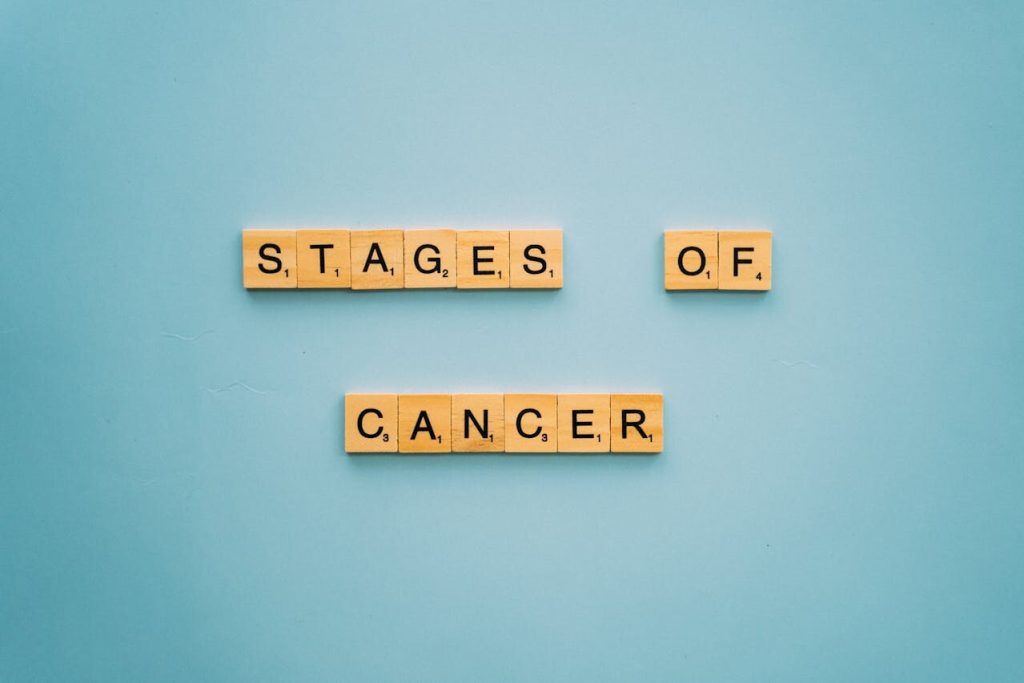Taxol is a chemotherapy medication often used to treat different types of cancer. While it can be highly effective in destroying cancer cells, it can also have significant side effects.
One important aspect of taxol treatment is understanding its cumulative effect. This refers to how the drug accumulates in the body over time and can impact patients’ health and well-being.
Key Takeaways
- Taxol is a chemotherapy medication used to treat cancer.
- Taxol cumulative effect refers to how the drug accumulates in the body over time.
- Understanding taxol cumulative effect is crucial for effective cancer treatment.
The Role of Taxol Cumulative Effect in Cancer Treatment
Taxol is a chemotherapy drug that is commonly used to treat several types of cancer, including breast, ovarian, and lung cancer. It works by preventing cancer cells from dividing and growing, ultimately leading to their destruction. While taxol is an effective treatment option, its cumulative effect is an important consideration in cancer treatment.
Over time, taxol can accumulate in the body, which means drug levels can increase beyond what is safe or necessary for treatment. This can lead to increased toxicity and potential complications. However, the cumulative effect of taxol also plays a crucial role in the drug’s effectiveness in killing cancer cells.
The Importance of Taxol Accumulation in Cancer Treatment
When taxol accumulates in the body, it can lead to increased drug levels in the bloodstream, allowing for better penetration of cancer cells. This can ultimately lead to increased cancer cell death and improved treatment outcomes. However, it is essential to balance the benefits of the drug’s cumulative effect with the potential risks for toxicity and other side effects.
As such, healthcare providers must carefully monitor patients receiving taxol treatment to ensure they are receiving the appropriate dose and that drug levels do not increase beyond what is safe for the patient. This involves regular check-ups and close communication between the patient and healthcare team.
Understanding Taxol Side Effects
Taxol is a chemotherapy drug that works by targeting rapidly dividing cancer cells and preventing them from dividing further. However, taxol can also affect normal cells in the body, leading to side effects in some patients. It is important for patients undergoing taxol treatment to understand these potential side effects and communicate any concerns with their healthcare provider.
Short-term Side Effects
Short-term side effects of taxol treatment can include:
- Nausea and vomiting
- Hair loss
- Loss of appetite
- Mouth sores
- Fatigue
- Low white blood cell count, which can increase the risk of infections
These side effects are typically temporary and will subside once the treatment is complete.
Long-term Side Effects
Long-term side effects of taxol treatment can include:
- Nerve damage, which can cause numbness, tingling, or pain in the hands and feet
- Hearing loss
- Increased risk of infection
- Heart problems
- Infertility
It is important for patients to discuss the potential long-term side effects with their healthcare provider and monitor for any signs of complications even after treatment is complete.
Managing Side Effects
There are several strategies that patients can use to manage the side effects of taxol treatment. These include:
- Using anti-nausea medication
- Taking pain medication for nerve damage
- Wearing a wig or hairpiece for hair loss
- Eating small, frequent meals to help with loss of appetite
- Using mouthwash and practicing good oral hygiene to prevent mouth sores
- Resting and conserving energy for fatigue
It is also important for patients to communicate any side effects they experience with their healthcare provider and follow any recommended interventions or treatments.
“While taxol can be an effective chemotherapy drug for treating cancer, it is important for patients to understand and manage the potential side effects associated with the drug to ensure the best outcomes.”
Long-Term Effects of Taxol Treatment
While taxol can be an effective treatment for cancer, it also has the potential to cause long-term effects on the body. These effects can impact a patient’s overall health and quality of life even after completing treatment.
Some common long-term effects of taxol treatment include:
| Effect | Description |
|---|---|
| Peripheral neuropathy | Taxol can damage the nerves in the hands and feet, leading to numbness, tingling, and weakness. |
| Cardiac toxicity | Taxol can negatively affect the heart, leading to an increased risk of heart disease. |
| Secondary cancers | Taxol treatment can increase the risk of developing secondary cancers, such as leukemia. |
It is important for patients to be aware of these potential long-term effects and to discuss them with their healthcare provider. Regular check-ups and monitoring can help detect any issues early on.
Managing Long-Term Effects
While some long-term effects of taxol treatment cannot be completely prevented, there are ways to manage them and minimize their impact on a patient’s life.
For example, patients experiencing peripheral neuropathy may benefit from physical therapy or medication to manage their symptoms. Lifestyle changes, such as regular exercise and a heart-healthy diet, can help mitigate the risk of cardiac toxicity.
Ultimately, it is important for patients to work closely with their healthcare provider and follow any recommended follow-up care to manage and address potential long-term effects of taxol treatment.
Managing Taxol Toxicity
Taxol toxicity can occur due to the cumulative effect of the drug in the body. It can manifest as neuropathy, bone marrow suppression, and gastrointestinal symptoms. Healthcare providers must closely monitor patients receiving taxol treatment to detect and manage any toxicity early on.
Some strategies to manage taxol toxicity include:
- Reducing the dosage of taxol
- Extending the time between treatment cycles
- Using medications to alleviate symptoms
- Providing nutritional support
It is essential to communicate any symptoms or concerns with the healthcare team, as they can adjust the treatment plan accordingly.
Understanding Taxol Drug Accumulation
Taxol is a commonly used chemotherapy drug for treating various types of cancer. It works by disrupting the normal function of cancer cells, preventing them from multiplying and spreading. However, taxol also has a cumulative effect, meaning that it can accumulate in the body over time.
As taxol accumulates, it can lead to increased drug levels and potential complications. The cumulative effect of taxol can also impact the overall health and well-being of patients in the long run.
It is important to understand the process of taxol drug accumulation in the body. This can help healthcare providers monitor drug levels and adjust dosages as needed to minimize the risk of complications.
Regular check-ups and communication with healthcare providers are crucial in managing taxol drug accumulation. Close monitoring of drug levels and appropriate interventions can prevent toxicities and other complications associated with taxol treatment.
Addressing Taxol Treatment Complications
Despite its effectiveness in treating cancer, taxol treatment can lead to several complications that require medical attention. Some common complications associated with taxol treatment include:
- Low white blood cell count
- Peripheral neuropathy
- Allergic reactions
- Hair loss
Other potential complications of taxol treatment include:
- Heart problems
- Joint pain
- Eye problems
- Changes in blood pressure
It is critical for patients undergoing taxol treatment to communicate openly with their healthcare providers. Patients should report any side effects or complications experienced during the treatment to their doctors. In some cases, the healthcare provider may need to adjust the dosage or change the treatment regimen.
Regular check-ups are also essential for monitoring the progress of taxol treatment. Blood tests and imaging scans can help detect any potential complications early and prevent further damage. Patients should not hesitate to ask their healthcare providers about any concerns or questions they may have regarding taxol treatment.
Impact of Taxol on the Body
Taxol is a potent chemotherapy drug that can have a significant impact on the body. It works by interfering with the division of cancer cells, ultimately leading to their destruction. However, this mechanism of action can also affect normal cells in the body, leading to potential side effects and complications.
One of the most common side effects of taxol treatment is myelosuppression, which refers to a decrease in blood cell counts. This can lead to an increased risk of infection, anemia, and bleeding. Taxol may also cause peripheral neuropathy, a condition that affects the nerves controlling sensation and movement in the arms and legs. Patients may experience tingling, numbness, or pain in these areas.
Other common side effects may include hair loss, nausea, vomiting, diarrhea, and mouth sores. These side effects are generally temporary and should resolve after treatment completion. However, taxol can also have long-term effects on the body.
Research has shown that taxol can cause cardiac toxicity, which may lead to heart failure. This is more likely to occur in patients who receive high cumulative doses of taxol or who have existing heart disease. Taxol may also cause lung damage, leading to shortness of breath or coughing. In rare cases, taxol can cause severe allergic reactions that require immediate medical attention.
It is important for patients receiving taxol treatment to have regular check-ups with their healthcare providers to monitor for potential complications. This will allow for early intervention and appropriate management strategies to be implemented if necessary.
Impact of Taxol on the Immune System
Taxol can also have an impact on the immune system, which plays a crucial role in fighting cancer. Taxol has been shown to enhance the activity of certain immune cells, such as T cells and natural killer cells. This can lead to a more effective immune response against cancer cells.
However, taxol can also suppress the immune system, making patients more susceptible to infections. This is why close monitoring and appropriate interventions are necessary to prevent potential complications.
Understanding Taxol Dose-Related Effects
Taxol dosage plays a crucial role in its efficacy and potential side effects. Since taxol is a cytotoxic agent, it works by destroying rapidly dividing cancer cells. The dosage of taxol prescribed can significantly impact the extent of cell destruction.
Higher doses of taxol can cause more severe side effects, such as peripheral neuropathy, a condition that affects the nerves and can cause pain, tingling, and numbness in the hands and feet. Additionally, high doses of taxol may lead to a higher risk of infection, bone marrow suppression, and anemia.
However, lower doses of taxol may result in suboptimal cancer cell destruction, leading to the cancer becoming resistant to the drug. Therefore, personalized dosing strategies are necessary to maximize the benefits of taxol treatment while minimizing the side effects.
Close monitoring is crucial during taxol treatment to ensure that the therapy’s optimal dose is being administered. Any potential side effects or complications should be promptly reported to the healthcare team.
Understanding Taxol Chemotherapy Effects
Taxol is a chemotherapy agent that is widely used in the treatment of various types of cancer. It works by disrupting the microtubules within cancer cells, thereby preventing the cancer cells from dividing and growing.
One of the key advantages of taxol is its ability to be used in combination with other chemotherapy agents for even better treatment outcomes. This is because it has a different mechanism of action than many other chemotherapy drugs, making it effective against cancer cells that may be resistant to other chemotherapy agents.
However, as with any chemotherapy drug, taxol can have side effects. Some of the common side effects of taxol include nausea, vomiting, hair loss, and fatigue. These side effects typically resolve after treatment ends.
While taxol is an important chemotherapy agent in the fight against cancer, it is important to work closely with a healthcare provider to manage any potential side effects and monitor for any long-term effects of treatment.
Understanding Taxol Chemotherapy Effects
Taxol is a chemotherapy drug that works by interfering with cancer cell division, ultimately leading to their destruction. It is commonly used in the treatment of breast, ovarian, and lung cancer, among others. While taxol has shown promising results in cancer treatment, it can also have several side effects that need to be managed.
As a chemotherapy agent, taxol works by inhibiting microtubule formation, which is essential for cell division. By doing so, it prevents cancer cells from multiplying, leading to their eventual death. Taxol is often used in combination with other chemotherapy drugs to enhance its effectiveness.
While taxol has shown positive results in cancer treatment, it can also have several side effects. These can include nausea, hair loss, neuropathy, myalgia, and fatigue, among others. These side effects can be managed with appropriate interventions and close monitoring by healthcare providers.
It is important to note that the dose of taxol can influence its effectiveness and potential side effects. Personalized dosing strategies can help optimize treatment outcomes while minimizing side effects.
Overall, taxol is a promising chemotherapy agent that has shown to be effective in the treatment of various cancers. However, its potential side effects and dose-related effects must be taken into account when designing treatment plans.
Holistic Cancer Treatment at Cancer Center for Healing
For patients seeking a comprehensive approach to cancer care, the Cancer Center for Healing in Irvine, CA, offers a wide range of holistic treatment modalities. Under the leadership of Dr. Leigh Erin Connealy, their team of experts provides personalized care for all types of cancer.
At the Cancer Center for Healing, patients benefit from a blend of conventional and alternative treatments aimed at addressing the root cause of cancer. Their approach includes advanced diagnostics, personalized nutrition plans, detoxification protocols, and other natural therapies.
Dr. Connealy’s expertise in integrative medicine and her commitment to patient-centered care has helped countless individuals overcome cancer and achieve optimal health. Her team’s comprehensive approach emphasizes addressing individual patient needs through targeted strategies, innovative technologies, and cutting-edge research.
Patients at the Cancer Center for Healing can expect a compassionate, patient-centered approach to cancer care that prioritizes overall health and well-being.
Conclusion
In summary, understanding taxol cumulative effect is critical for successful cancer treatment. Taxol therapy significantly contributes to eradicating cancer cells, but it also has potential side effects, both short-term and long-term. Careful monitoring and appropriate interventions are necessary to manage taxol toxicity and treatment complications. The dosage of taxol can impact treatment outcomes and must be personalized according to individual needs.
The Cancer Center for Healing, located in Irvine, CA, under the expert guidance of Dr. Leigh Erin Connealy, takes a holistic approach to cancer care. They offer a range of treatment modalities and therapies that are tailored to individual patients and their unique cancer diagnosis. They also support patients throughout their cancer journey, helping them achieve physical, emotional, and spiritual healing.
If you or a loved one is seeking comprehensive cancer care, we encourage you to schedule a consultation with the Cancer Center for Healing. With their personalized approach and compassionate care, they aim to restore health and wellness to all their patients.
FAQ
Q: What is taxol cumulative effect?
A: Taxol cumulative effect refers to the build-up of taxol in the body over time, which can have a significant impact on the effectiveness of cancer treatment.
Q: How does taxol cumulative effect play a role in cancer treatment?
A: Taxol cumulative effect plays a crucial role in the effectiveness of cancer treatment as it allows for the continued destruction of cancer cells over time.
Q: What are the common side effects of taxol treatment?
A: Common side effects of taxol treatment may include nausea, hair loss, fatigue, and neuropathy.
Q: What are the long-term effects of taxol treatment?
A: The long-term effects of taxol treatment can vary but may include heart problems, nerve damage, and secondary cancers.
Q: How can taxol toxicity be managed?
A: Taxol toxicity can be managed through close monitoring of drug levels and appropriate interventions, such as dose adjustments or supportive care measures.
Q: How does taxol drug accumulate in the body?
A: Taxol drug accumulates in the body through repeated dosing, leading to increased levels and potential complications.
Q: What are the potential complications of taxol treatment?
A: Potential complications of taxol treatment can include allergic reactions, infections, and organ damage.
Q: What is the impact of taxol on the body?
A: Taxol can impact various body systems, including organs, tissues, and overall physiological functioning.
Q: How does the dosage of taxol influence treatment outcomes?
A: The dosage of taxol can influence treatment outcomes and potential side effects. Personalized dosing strategies are crucial for optimizing treatment success.
Q: What are the broader effects of taxol as a chemotherapy agent?
A: Taxol acts as a chemotherapy agent by interfering with cancer cell division. It is often used in combination therapy to enhance treatment effectiveness.
Q: Can taxol persist in the body after treatment completion?
A: Yes, taxol can persist in the body even after treatment completion. This drug persistence may have implications for long-term health.
Q: What holistic cancer treatment options are available at the Cancer Center for Healing?
A: The Cancer Center for Healing, under the expertise of Dr. Leigh Erin Connealy, offers holistic treatment modalities for all types of cancer, focusing on comprehensive care.






